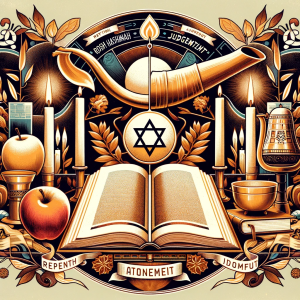Biblical Feasts and Holy Days (3of8)

Lesson 7: Shavuot: Significance and Observance
Title: “Shavuot: The Gift of Torah and Spirit”
Introduction: Exploring Shavuot’s historical roots, its celebratory traditions, and its significance as a time of covenant and receiving divine gifts.
Discussion Points and Possible Answers:
- Historical Event:
- Giving of the Torah: Commemorates the moment when God gave the Torah to Moses on Mount Sinai, an event detailed in Exodus 19-20.
- Celebration in Jewish and Hebrew Roots Traditions:
- All-night Torah Study: Known as Tikkun Leil Shavuot, a night dedicated to Torah study.
- Reading the Book of Ruth: Symbolic of Ruth’s conversion and her harvesting which occurred around Shavuot.
- Eating Dairy Foods: Traditionally includes cheesecakes and blintzes, symbolizing the “land flowing with milk and honey.”
- Connection to Christian Pentecost:
- Timing: Pentecost, celebrated 50 days after Easter, coincides with the timing of Shavuot.
- Holy Spirit: Acts 2 describes the descent of the Holy Spirit, paralleling the divine revelation at Sinai.
Summary: Discussing Shavuot’s dual significance in commemorating the Torah and the advent of the Holy Spirit.
Biblical Story: The narrative of Israel at Mount Sinai receiving the Torah (Exodus 19-20).
Related References:
- Acts 2: Describing the Christian Pentecost.
- Exodus 19-20: The Sinai event.
- “The Book of Ruth: Journey of Faith” by Joan Chittister: A study on the Book of Ruth, often read during Shavuot.
Conclusion: Emphasizing Shavuot’s bridging role between the Old and New Testaments, celebrating divine revelation and guidance.

